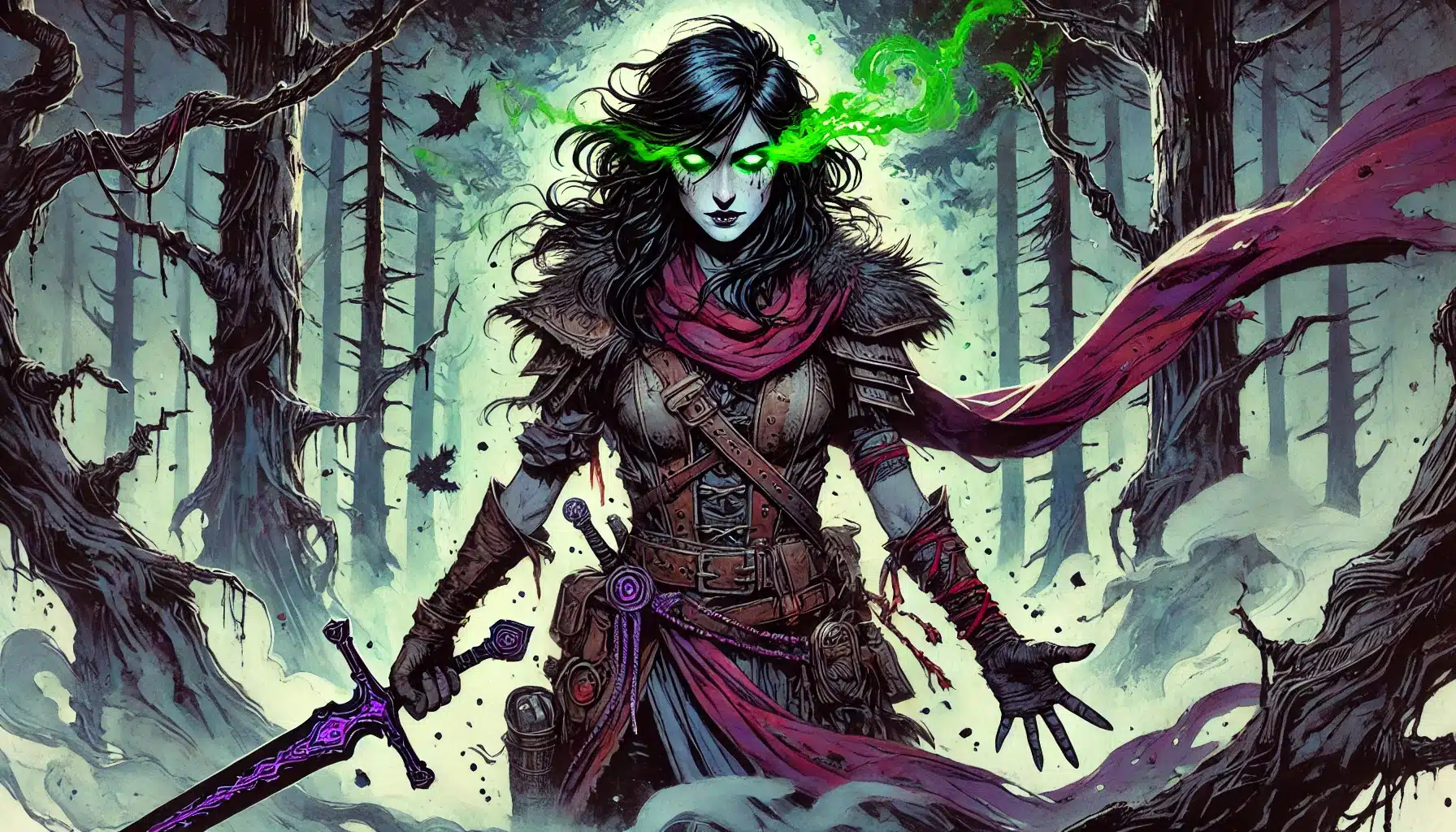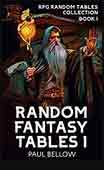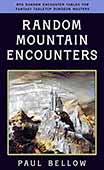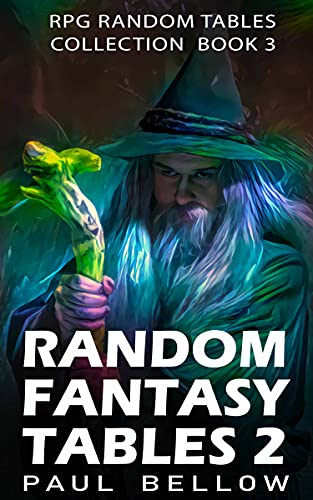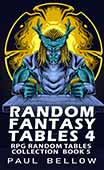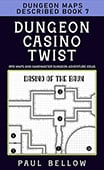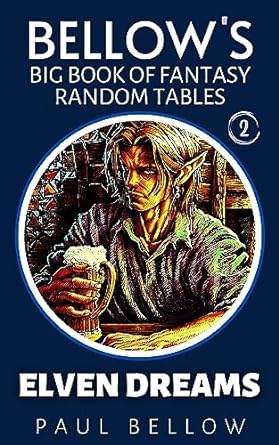A chill wind is blowing through the ever-evolving tomes of Dungeons & Dragons, and in its spectral draft comes an Unearthed Arcana that’s sure to haunt home tables for years to come. Scheduled to creep into public playtesting in May 2025, the brand-new Hollow Warden Ranger subclass embodies the sharp, fresh vision heralded by the looming 2024 rules overhaul. Wizards of the Coast is putting all classes under the scalpel, reshaping not just mechanics but the very soul of each archetype, forging roles both more distinct and divisive. Amid this surgical operation, the Ranger—long the subject of heated argument and hopeful D&D homebrew—finds itself again in the crosshairs.
At the dark heart of this subclass beats a concept as chilling as it is compelling: a revenant-stalked guardian who is less woodland sniper and more primal specter, seething with vengeance from beyond the grave. The Hollow Warden’s design comes steeped in horror, drawing inspiration from slasher legends, folk monsters, and the quivering dread that haunts wild, lonely places. This is more than a Ranger who’s come back from death—this is a Ranger who hunts as death itself.
But amidst all the delicious, gothic dressing lies a mechanical core that’s as contentious as a banshee’s wail at midnight: the subclass’s inextricable bond with the spell Hunter’s Mark. For years, the Ranger’s reliance on this single spell—so central, yet so polarizing—has fueled heated table arguments. Does tethering the class to Hunter’s Mark make for exhilarating synergy or stifling predictability?
Rather than outgrowing the controversy, the Hollow Warden seems a defiant escalation—a subclass that doubles down and dares critics to take their best shot. Every feature, every surge of power, revolves not just around the hunting of prey, but around the persistent activation and focus of Hunter’s Mark. In doing so, Wizards of the Coast throws the doors open for a new era of Ranger debate…and perhaps new shadows in your campaign.
- Hollow Warden Ranger: D&D Lore and Theme
- Hollow Warden Ranger Spell List and Design Philosophy
- Feature by Feature Breakdown
- The Hunter’s Mark Problem
- How the Hollow Warden Could Play at the Table
- Tactics and Transformation Use Cases
- Horror Aesthetic Inspiration
- Fan Response and Future Design
- Final Thoughts on the Hollow Warden
Hollow Warden Ranger: D&D Lore and Theme
From the moment the flames of resurrection lick at their bones, Hollow Wardens are claimed by the supernatural. They exist halfway between the world of the living and that of death, forever changed by a brush with some eldritch, primal force. This isn’t merely an edgelord with a tragic backstory; the subclass is a living embodiment of predatory dread and woodland terror, invoking the feeling of campfire tales and things crouching in the dark just beyond sight.
Imagine a Ranger whose essence is now intertwined with the cold persistence of a slasher villain—an unstoppable revenant, stalking the wilds with chilling intent. The Hollow Warden blurs the line between hunter and monster, evoking the inexorable approach of masked fiends or ancient, forest-haunting spirits whose very presence infects the air with silent terror. The transformation here is not only physical, but existential—players are asked to delve into how their character grapples with alien instincts and inhuman urges, not just wielding power but feeling its gnawing hunger.
Try my AI Tabletop RPG generators...and an extensive library of content!
This horror is not mere window dressing. At the core of the Hollow Warden’s fantasy is the idea of becoming something to be feared—of standing at the edge of civilization as both protector and predator. Death has touched these wardens not with finality, but with a transformation: they serve not just nature, but the vengeance of nature, stalking those who would harm the wild or violate the bounds of life and death.
The “relentless stalker” archetype pulses through every narrative opportunity. Building a Hollow Warden means leaning into high-tension scenes—a silent presence in the woods, a shadow looming in the lantern light, a party member who radiates the chill of something hunting from beyond. It can make for unforgettable personal arcs and grant Dungeon Masters the perfect narrative tool to inject a creeping sense of dread into even the safest seeming havens. What happens when the hunter loses itself in the hunt?
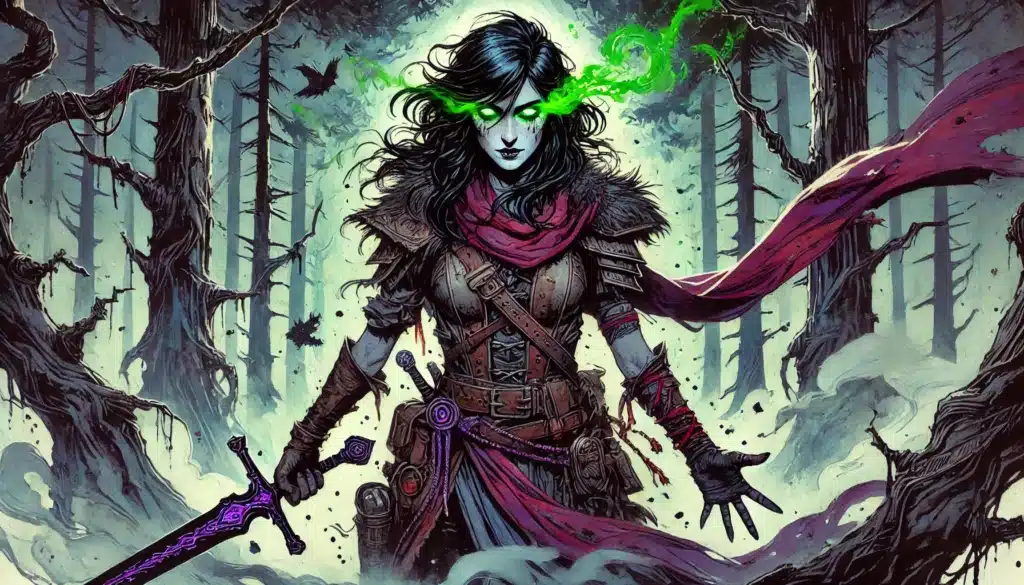
Hollow Warden Ranger Spell List and Design Philosophy
The Hollow Warden’s spell list is an ode to horror—each invocation meticulously chosen to make the subclass seep with predatory ambiance and chilling intent. Every automatic spell prepares the Ranger to haunt their quarry, obscure their presence, or curse their foes. More than flavor, these spells serve to immerse players further into the subclass’s supernatural mythos.
Yet, beneath the thematic cohesion lies a fiercely restrictive core: all subclass features either operate through or are gated behind Hunter’s Mark. Almost every boon, every transformation, springs to life only when the Ranger is actively marking their prey. This approach forces tunnel vision onto a class that was once lauded for flexibility—there’s poetry, but also a prison in the design.
⚔️ Fantasy RPG Random Tables Books
Make life as a Gamemaster easier…
If you play Dungeons & Dragons, Pathfinder, or other fantasy RPGs, this
RPG random tables series
is packed with encounters, NPCs, treasure, and more. Available in eBook or print—either way, you’ll have a wealth of adventure ideas at your fingertips.
The spell list, then, is both the Hollow Warden’s crown and its chains. Where the subclass excels at horror storytelling and relentless pursuit, it suffers from an incredibly narrow combat approach. If a narrative demands flexibility in spell choice—support, utility, crowd control—the Hollow Warden often comes up short, as every tactical decision inevitably circles back to that iconic mark.
| Level Acquired | Spell Name | Thematic Purpose |
|---|---|---|
| 3rd | Cause Fear | Instills primal dread, evoking the slasher’s aura |
| 5th | Pass Without Trace | Shrouds the warden in unnatural silence and shadow |
| 9th | Speak with Dead | Calls upon death’s secrets, tying to revenant lore |
| 13th | Shadow of Moil | Cloaks in darkness, radiating unholy terror |
| 17th | Enervation | Drains vitality, feeding on the fear of the hunted |
Part of what makes this spell design extraordinary is its uncompromising commitment to theme. Every spell heightens the horror aesthetic, the sense that this is a Ranger who warps the rules of life and death. But it’s a razor-edged trade: narrative drama wins, versatility loses.
In a game that rewards adaptability, narrowing your spell focus so absolutely around Hunter’s Mark has sparked lively discourse. Players who crave thematic intensity may find the sacrifices worth it; those seeking a Ranger who can flexibly respond to a variety of challenges may leave the Hollow Warden—in true horror tradition—behind in the woods.
Feature by Feature Breakdown
Wrath of the Wild (3rd level) is the beating death-heart of the subclass and its most iconic mechanic: at-will, you unleash your inner revenant, transforming into a silhouette of stalking hatred. With Hunter’s Mark active, this transformation can be triggered, granting temporary hit points and a fear-inducing aura that compels enemies to keep their distance. Few features convey “my character is an apex horror” quite so viscerally. The downside? Unless Hunter’s Mark is up and running, all that latent terror is bottled, powerless—a feature waiting in the dark.
Moving on, Hungering Might (7th level) builds on your deathly transformation, allowing you to siphon life-force from those marked for death. Healing when you fell a foe already suffering under Hunter’s Mark sounds thematically perfect—every kill staves off your own demise. It’s a beautiful moment of predatory satisfaction, but again, the gears grind to a stop if for any reason you’re forced to drop concentration on your signature spell—one stray Dispel Magic, and you’re just another Ranger.
Rot and Violence (11th level) is the Hollow Warden taking horror past the point of subtlety: your attacks now rot flesh as well as bleed it, dealing extra necrotic damage to your marked prey and sending terror rippling outward. Mechanically, this gives you clear escalation, but the feature’s dependency ensures you’re locked not just into a spell, but a play pattern—felled foes, affected only when you’re transformed, leads to waxing and waning power that can be either exhilarating in boss fights or a letdown against scattered or unmarkable enemies.
At 15th level, Ancient Endurance makes you truly monstrous. While transformed and with Hunter’s Mark humming, you gain resistances to mundane and magical harm, echoing classic slasher immunity to bullets and blades. Thematically, you become a force of nature—they hit, but can they stop you? Yet, for all the grandeur, it remains shackled: a single loss of concentration, and the boogeyman dissolves into mere mortal, sometimes at the worst possible moment.
This domino effect—every feature, every high, built on a conditional foundation—means every encounter is a gamble. At its best, this creates wild swings, storytelling peaks, and “did you see that?” moments. At its worst, it can leave players feeling cheated out of their horror-fueled fantasy by a single bad die roll or inconvenient condition—just ask any Ranger outmaneuvered by an anti-magic field or the silence spell.
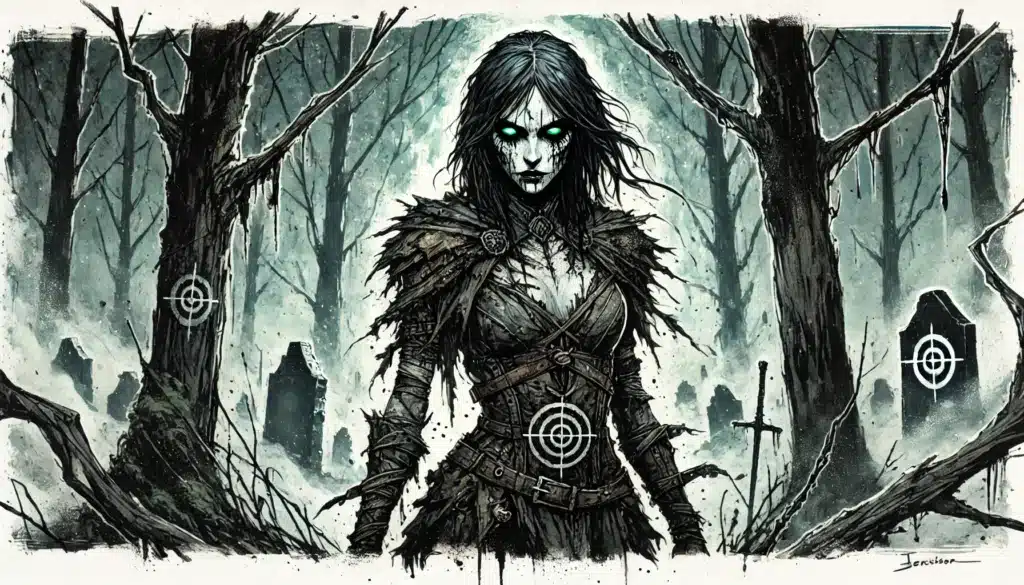
The Hunter’s Mark Problem
The introduction of the Hollow Warden amplifies a debate that has roiled the Ranger community for nearly a decade: is doubling down on Hunter’s Mark a clever way to reinforce the class’s identity, or just a symptom of a lack of imagination? Hunter’s Mark was always intended to be the iconic Ranger spell—a mark of the predator, a beacon of pursuit—but few spells are so persistently required by a subclass’s every feature.
Requiring Hunter’s Mark as a precondition for subclass powers limits the Ranger’s breadth and adaptability. With concentration locked into the mark, you’re often unable to pivot to utility spells, reactive defenses, or creative crowd control; your “Ranger magic” becomes a single-minded chase, rather than a quiver full of mystical options. This is especially egregious for high-level play, where enemies might dispel your mark, or where the encounter calls for something more inventive than “I hit them, but spookier.”
The Hollow Warden’s design telegraphs every move: everyone knows if you’re dangerous, Hunter’s Mark must be live. It makes combat flow predictable, narrows your choices, and can leave you on the sidelines when adaptability would make a hero. Many will celebrate the thematic precision, but just as many will bewail the shackles it places on creative play.
⚔️ Fantasy RPG Random Tables Books
Make life as a Gamemaster easier…
If you play Dungeons & Dragons, Pathfinder, or other fantasy RPGs, this
RPG random tables series
is packed with encounters, NPCs, treasure, and more. Available in eBook or print—either way, you’ll have a wealth of adventure ideas at your fingertips.
Mechanical Consequences of Hunter’s Mark Dependency
- You must always concentrate on Hunter’s Mark, excluding other crucial concentration spells.
- Spell slots are frequently taxed just to re-cast Hunter’s Mark if concentration is lost.
- Utility spells like Pass without Trace and Entangle become nearly impossible to use in combat.
- Combat flow becomes extremely predictable: mark, attack, repeat.
- Adapting to situational challenges is more difficult, as the subclass offers few alternatives.
- Losing concentration (via damage, counterspell, etc.) means losing nearly all subclass features at once.
- Party role is restricted; you can’t easily act as scout, controller, or support if you’re always marking.
- Some monsters or encounters with immunity to tracking or marking can “turn off” your powers.
- Players may feel “punished” for creative spellcasting.
- Fights against multiple targets are mechanically awkward—power is always focused on one mark.
- Dungeon masters may find it harder to balance encounters around such narrow specialization.
- Roleplay options narrow: every action, even outside combat, revolves around hunting and marking.
This tunnel vision isn’t meaningless, though. For players craving a unified theme and joyous consistency—the relentless hunter, the living embodiment of vengeance—the subclass is a triumph. For those who want every hill and hollow to suggest new tactical vistas, it’s a creative dead end. The Hollow Warden stakes everything on its identity, for better or worse.
In the end, the subclass is a mirror held up to the entire Ranger debate: do we want arrow-slinging Swiss Army knives, or do we want legends—icy, implacable, unforgettable? Only the dice, and the players, will decide if this gamble is genius or gaffe.
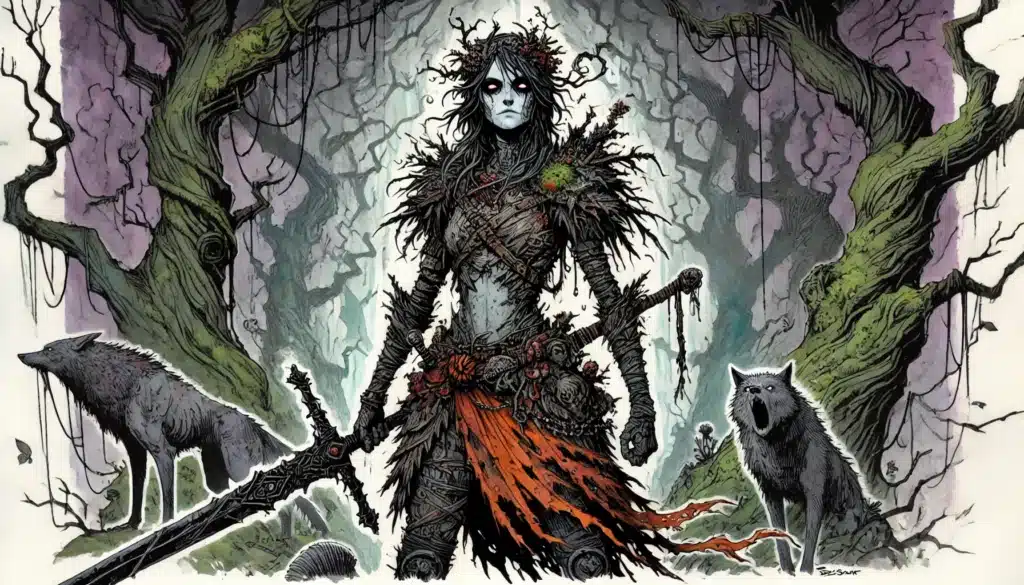
How the Hollow Warden Could Play at the Table
Step into the Hollow Warden’s boots and you’ll find every session is a brush with the uncanny—both in narrative and in combat. Players who lean into the subclass’s horror elements will cultivate an undeniable presence: the shadow that lingers at camp, the first to move when the light dims, the last voice heard before the party sets off. This is a Ranger for those who want their table to shiver when they speak.
Mechanically, every combat becomes a game of tension and timing. The subclass demands careful spell management: can you keep Hunter’s Mark up through multiple fights, or do you risk precious spell slots reapplying it as new targets appear? The rush of starting your session as a silent guardian and transforming, mid-battle, into a terrifying predator is a narrative high—one that rewards dramatic storytelling and tactical bravado both.
Party dynamics will shift to accommodate the Hollow Warden’s particular needs. Allies may find themselves covering for your concentration checks, or setting up the board for your transformed onslaught. Synergy with classes that grant temporary hit points or defense boosts is strong—anything that helps you keep Hunter’s Mark alive long enough to cut loose. The subclass will often shine brightest in boss encounters or tense, single-prey pursuits—when the party hunts, or is hunted, by something singular.
Yet, the flip side is clear: some players may feel the walls closing in during more open-ended adventures. When utility, exploration, or social roleplaying are center stage, the need to “always be marking” can suppress other ways of contributing. For the right group and campaign, it creates a legend. In more sandboxy adventures, it might quickly feel like a curse.
Tactics and Transformation Use Cases
The Hollow Warden’s tactical heart beats loudest when players master the tightrope walk of transformation. Do you trigger Wrath of the Wild at the first sign of trouble, risking early exhaustion, or do you hold it for the moment your prey reveals its true threat? Savvy players will recognize the enormous swing between holding back as a brooding sentinel and unleashing terror at the opportune moment.
Try my AI Tabletop RPG generators...and an extensive library of content!
Managing your hit points becomes paramount—transformation gives temporary resilience, but only while the mark flickers. Positioning turns into an art: you want enemies inside your fear aura, but not so close they can break your concentration with relentless attacks. On the perfect battlefield, you’re a shadowy god of death; on the wrong one, you’re a ghostly snack for opportunistic foes.
Successful Hollow Wardens will treat spell slots as a finite resource to be guarded as fiercely as hit points: do you use Hunter’s Mark on a goblin, or save it for the necromancer behind the throne? Predicting encounter pacing, reading the DM’s cues, and timing your transformation for narrative or tactical impact are the marks of a master.
Tactical Tips for Playing the Hollow Warden
- Always cast Hunter’s Mark before expected combat—wasting a round on setup can cost momentum.
- Reserve spell slots for recasting Hunter’s Mark in longer adventuring days or enemy-filled dungeons.
- Use Pass without Trace only during critical scouting excursions; drop it for combat readiness.
- Time Wrath of the Wild for when your mark is exposed and not easily able to break your concentration.
- Lure enemies into your fear aura with tactical retreats or choke points.
- Pair with party members who can grant you advantage on concentration checks (e.g., Bless or War Caster).
- Focus on single, dangerous targets to maximize the subclass’s single-mark strengths.
- Don’t rely solely on transformation every fight—save it for big moments to keep the horror fresh.
- When low on slots, prioritize marking elite or spellcasting foes with dangerous abilities.
- Scout enemy abilities—avoid picking fights in Dispel Magic or counterspell-heavy zones.
- Utilize social and exploration scenes to play up your unsettling narrative presence.
- Communicate with your DM to structure encounters that let you shine with your thematic tools.
The subclass’s seductive power is also its greatest danger—go all-in on transformation too soon, and you may find yourself drained, out of slots, and unable to bring the spooky drama when it matters most. A Hollow Warden is not just a relentless killer, but a patient, calculating menace.
If you plan poorly, you may find your dramatic peak wasted on trivial threats, or your mark snuffed out before the real danger even emerges. In the long shadowy hours of adventure, overreliance on your triggers could leave you powerless when you need to be at your most terrifying. Choose your moments with care: the true horror lies in not knowing when the real nightmare will begin.
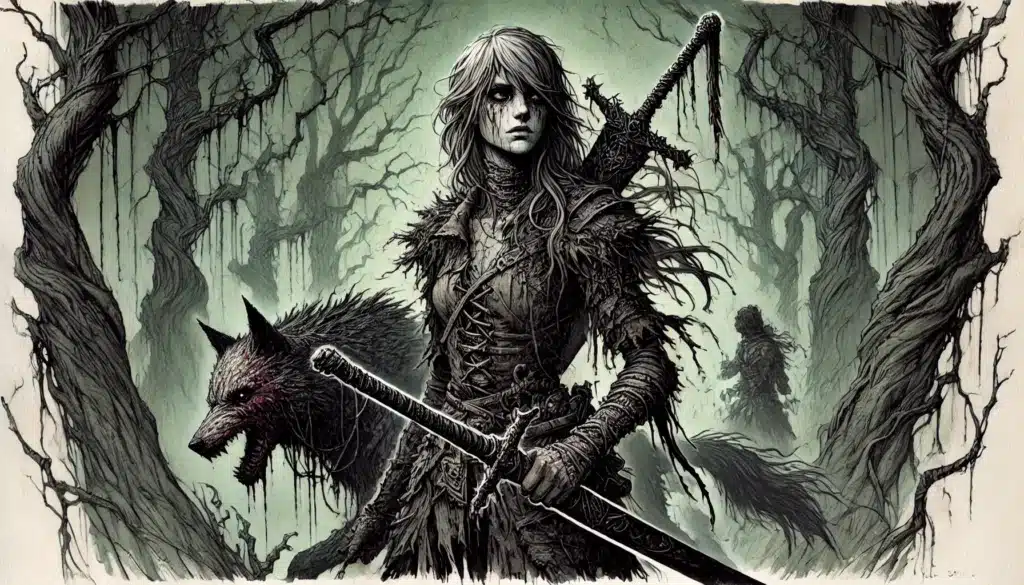
Horror Aesthetic Inspiration
Bringing the Hollow Warden to life means more than simply choosing dark armor and calling it a night. Dive into the aesthetic that makes this subclass unique—searing the image of a revenant hunter into every session, every encounter, every haunted pause in the dungeon’s gloom.
Let your narrative choices reflect the subclass’s primal fear—describe how your eyes seem to gleam in candlelight, or how the mere hush of your footsteps leaves an unnatural silence behind. The best Hollow Wardens do not merely act as horror icons; they become them, inspiring both intrigue and unease among their allies and adversaries alike.
Dungeons & Dragons is at its strongest when every player, and the DM, commits to a mood. Use description, motivation, even music at the table to constantly reinforce the Hollow Warden’s otherworldly presence. Let yourself become not just a Ranger, but a legend—a myth meant to unsettle.
Inspirations for Hollow Warden Characters
- Black Phillip and the eerie woods of The Witch
- The relentless, silent killer from Halloween (Michael Myers)
- Wendigo folklore and the hunger-haunted spirits of Algonquin tradition
- The shadowy figures and tentacled horrors from The Ritual
- The unkillable revenant in The Revenant
- Ancient forest spirits like the Leshy or Chernabog
- Jason Voorhees’s indomitable stalker presence in Friday the 13th
- The Pale Man from Pan’s Labyrinth, representing hunger and dread
- Slender Man and the faceless terrors of internet folklore
- The Blair Witch’s unseen menace
- The silent, looming threat of STALKERs in S.T.A.L.K.E.R. or Metro Exodus
- Snowbound, ghostly pursuers from arctic horror tales
Leaning into these horror inspirations can elevate your campaigns into something truly unique. Every transformation is not just a mechanical shift, but a narrative inflection point—every shadow, every hush in the underbrush, a premonition of dread fulfilled.
This commitment to flavor and theme, more than any damage number or fear aura, is what transforms the Hollow Warden into legend. Embrace the darkness, and you’ll craft a story no one—player or DM—will soon forget.
Fan Response and Future Design
Early community chatter is electric—on one hand, there’s open-mouthed awe at how bravely the Hollow Warden leans into its horror role, with threads lauding its archetypal clarity and gothic style. On the other, the churn of old Ranger debates has been unleashed once more: Is this the final form of the “always be marking” conundrum? Has Wizards sacrificed breadth for branding? Or is this precisely what subclass design should be—iconic, memorable, and just a little polarizing?
Some players will love being the star of a haunted campaign—especially those who treat D&D as a theater of the mind, thriving on evocative roleplay and memorable moments. Others, especially the tacticians and jacks-of-all-trades, may baulk at the design’s lack of latitude, feeling stifled by its concentration obsession. The Hollow Warden is not a catch-all crowd-pleaser—but perhaps, in a sea of bland subclasses, that’s the point.
What does this signal for the future of D&D subclass design? Wizards seems intent on making each option distinct, even at the expense of universal appeal. We may be entering an age where choice means picking not just a flavor, but a package of strengths and vulnerabilities—a world where each subclass is uncompromising in its vision, for good or ill.
| Fan Response Type | Main Praise | Main Criticism | Predicted Playstyle Preference |
|---|---|---|---|
| Narrative-heavy | Strong theme and horror storytelling | Lack of utility spells | Campaigns focused on drama |
| Tactical optimizer | Clear, powerful escalation with single target | Predictable combat flow, lack of flexibility | Boss hunts, set-piece battles |
| Casual/new player | Easy to grasp identity, memorable transformation | Conditional features hard to track | Monster-of-the-week games |
| Hardcore min-maxer | Synergy with party buffers and concentration tools | Forced into one “correct” spell loadout | High-level, coordinated play |
| Horror enthusiast | Unparalleled immersion and chill-inducing mechanics | Can feel like a gimmick if BBEG isn’t present | Spooky one-shots, horror arcs |
| Traditional Ranger fan | Distinct identity for the class | Loses classic versatility and multi-role appeal | Focused campaigns |
In the end, the Hollow Warden’s future will be written at the table—by those who dare to try it and those who dare to DM for it. Wizards of the Coast has opened the door for discussion; now it’s time for the community to walk through, bringing feedback, critique, and innovation as they test the subclass.
Whether the Hollow Warden becomes a legend or a cautionary tale, the chorus of player voices during playtesting will shape its final form. Dive in, experiment, and—most importantly—let your next character haunt the halls of D&D history.
Final Thoughts on the Hollow Warden
In the baleful twilight cast by the Hollow Warden, D&D’s subclass philosophies stand illuminated: here is a design that dares to risk everything for a haunting aesthetic and a razor-sharp mechanical identity. Its strengths are impossible to overlook—this is Rangers as horror legends, gods of their own shadowy tales, able to dominate any narrative that leans into dread and tension.
Yet, every blessing is shadowed by a curse. The subclass frees players from blandness only to bind them with new chains: its unwavering reliance on Hunter’s Mark can leave the character’s power as fragile as a concentration check, and its razor-narrow focus leaves expert players missing the tactical luxuries of earlier builds. If you want the wild, wide versatility of traditional Rangers, this is not the subclass for you.
⚔️ Fantasy RPG Random Tables Books
Make life as a Gamemaster easier…
If you play Dungeons & Dragons, Pathfinder, or other fantasy RPGs, this
RPG random tables series
is packed with encounters, NPCs, treasure, and more. Available in eBook or print—either way, you’ll have a wealth of adventure ideas at your fingertips.
Still, for the right player—the horror enthusiast, the dramatic storyteller, the tactical predator with a taste for risky transformation—the Hollow Warden offers a rare pleasure: clarity of vision, a focus on mood, and the thrill that comes from dancing always on the edge between life and undeath. Its features are built for legendary scenes, not for jack-of-all-trade improvisation.
Yes, its mechanical demands could frustrate. Yes, some campaigns and tables will simply not be compatible. But the risk itself—the willingness to anchor every power, every moment, on a single spell and a transgressive fantasy—may well be what D&D design needs: fewer bland compromises, more iconic standouts.
The Hollow Warden is for those who want their Ranger to be the monster in the dark, the slasher stalking the woods—the last whisper before dawn. For everyone else? Perhaps it’s safer, for now, to stick to the path and leave this haunted trail untrodden.

